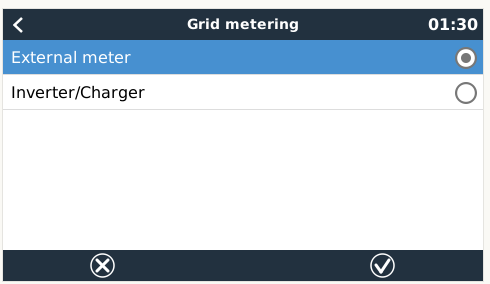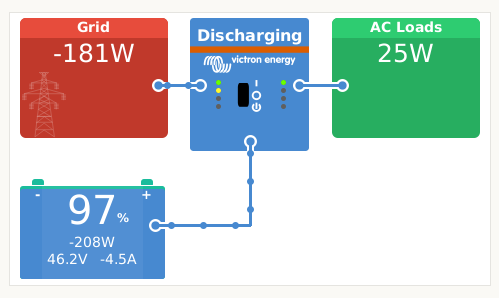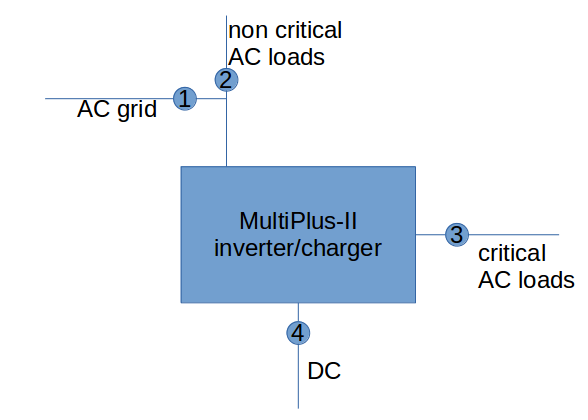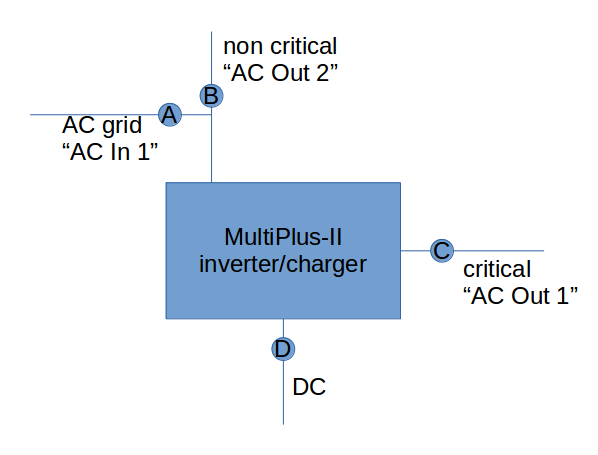I have a MultiPlus-II that is tied to the AC grid. I recently connected it to a GX (on a Raspberry Pi 3). I already changed the configuration from Virtual Switch to the ESS Assistant. I have no grid metering connected to the GX or to the MultiPlus-II. For the moment, I want to control it manually.
Even though the grid setpoint is set to -800W to feed 800W back into the grid, it doesn't seem to have any effect and the MultiPlus-II stays in Passthru mode.


I have searched this forum and found one similar post (https://community.victronenergy.com/questions/48014/multiplus-ii-gx-stays-in-passthru-state.html) that ended up to be a bug/singularity.
Mine was cause because of a GX misconfiguration.
See https://www.victronenergy.com/media/pg/Energy_Storage_System/en/faq.html Q4
In ESS, the conditions for the VE.Bus system to be in pass-through (ve.bus state: passthru) are:
When the GX device is no longer receiving data from the grid meter. Note that this is only for systems that are configured to have an external grid meter. See the Settings → ESS → Control without grid-meter setting.
...
So the solution seems to be simple... Simply adjust the settings.
However, there is no "without grid-meter" option in Settings > ESS > Grid metering

The "without grid-meter" option is in fact the inverter/charger option. This is quite confusing. After setting it to Inverter/Charger, the Grid setpoint works as intended.

So far so good. But as you can see in the last screenshot, the "critical loads" box disappeared.
After I changed the grid metering setting back to external meter, I got the critical loads box back for a short time while it was also feeding energy into the grid.

But then the feed in stopped. Because off course, the setting is wrong. And the register has not been written for 60 seconds.

Correcting the setting feeds energy into the grid again, but then I loose my "critical loads" box again.

I have been switching back and forth a couple of times:
- if I set it to External meter, the critical loads box shows, but grid setpoint does not work
- if I set it to Inverter/Charger, the critical loads box is hidden, but grid setpoint does work.
This looks like a (reproducable) bug in the interface to me. Can someone confirm? Or point out what I'm missing?
P.S.: in case someone notices in the screenshots, I changed the Grid setpoint from -800W to -200W during the troubleshooting.





